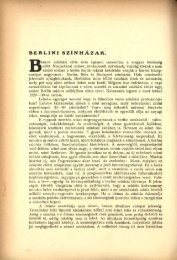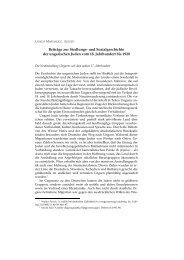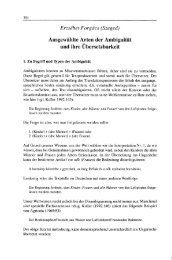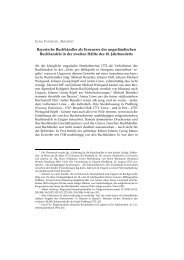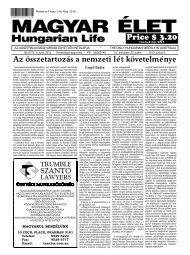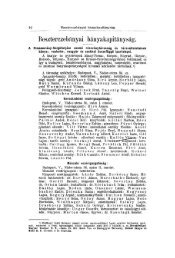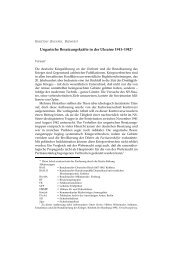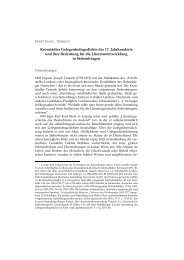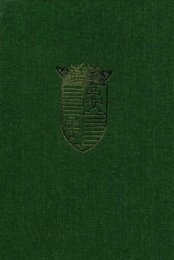Journal of Eurasian Studies - EPA
Journal of Eurasian Studies - EPA
Journal of Eurasian Studies - EPA
You also want an ePaper? Increase the reach of your titles
YUMPU automatically turns print PDFs into web optimized ePapers that Google loves.
April‐June 2010 JOURNAL OF EURASIAN STUDIES Volume II., Issue 2.<br />
_____________________________________________________________________________________<br />
House <strong>of</strong> Habsburg, became one <strong>of</strong> the leading scholars at the Hungarian Academy <strong>of</strong> Sciences.<br />
Hunsdorfer, who Magyarized his name into Pál Hunfalvy, was appointed chief librarian <strong>of</strong> the<br />
Hungarian Academy <strong>of</strong> Sciences in 1851. The Great Dictionary <strong>of</strong> the Academy <strong>of</strong> Sciences, also referred<br />
to as the Czuczor‐Fogarasi dictionary, which was finished in 1874, was heavily attacked by Pál Hunfalvy.<br />
Hunfalvy, who claimed that the dictionary was based on false premises, could however not prevent its<br />
publication. 8<br />
The other scholar, who played an important role in Bálint de Szentkatolna’s further scientific career,<br />
was the Orientalist, Ármin Vámbéry. Vámbéry was a traveller to Central Asia and he lectured in Turkish<br />
at the University <strong>of</strong> Pest. Although Hunfalvy designated the Finnish language as the most influential in<br />
the research <strong>of</strong> Hungarian language relationships already in 1861, Vámbéry kept advocating the genetic<br />
relationship between Hungarian and the Turkish‐Mongolian languages, especially from 1870 on, when he<br />
published his study on ‘Hungarian and Turkish‐Tatar Cognates’. 9 In order to prove that the Hungarian<br />
language was genetically related to Finnish, Hunfalvy invited the German linguist, Jozef Budenz (1836‐<br />
1892), educated at the University <strong>of</strong> Göttingen, to the Hungarian Academy <strong>of</strong> Sciences. Budenz was<br />
however not successful in applying the methods <strong>of</strong> comparative Indo‐Germanic linguistics to Hungarian<br />
and Finnish. He at first even thought that Hungarian was related to Turkish. 10<br />
The debate between the two camps, on the one hand, the supporters <strong>of</strong> the Finnish and, on the other<br />
hand, the Turkish relationship to Hungarian, was called the ‘Ugor‐Turkish War’. 11 In fact, the term ‘war’<br />
is not as obscure as it seems at first sight because it was actually a continuation <strong>of</strong> the Hungarian‐Austro‐<br />
German political and military clash <strong>of</strong> 1848‐1849. The ‘battlefield’ was this time not Hungary but the<br />
Hungarian identity, i.e. the quest for the origins <strong>of</strong> the Hungarians and their language. The German camp,<br />
including Hunfalvy and Budenz, pushed the Nordic relationship <strong>of</strong> the Hungarians; the Hungarian camp,<br />
including Fogarasi and Vámbéry, looked to the south for Hungarian relatives. Since the southern option<br />
was closer to the cradle <strong>of</strong> human culture and civilization than the Nordic one, it was favoured by the<br />
Hungarian camp and disliked by the German camp. Bálint de Szentkatolna joined – how could he do<br />
anything else as a Székely ‐ the Hungarian camp. The Székely scholar was <strong>of</strong> the opinion that it was<br />
unacceptable for Germans, like Hunfalvy and Budenz to head the Department <strong>of</strong> Linguistics <strong>of</strong> the<br />
Hungarian Academy <strong>of</strong> Sciences and decide on the origin <strong>of</strong> the Hungarian language. 12 In 1871, Vámbéry<br />
urged Bálint de Szentkatolna to study the Central Asian language affinities, i.e. Mongolian, Tatar,<br />
Chinese, to the Hungarian language in situ. Fogarasi advised him to take up Mongolian and Russian. 13<br />
(…)<br />
8 Marácz (2008, 565‐566).<br />
9 See Vámbéry (1870, 1877, 1882).<br />
10 Marcantonio (2002, 35‐42)<br />
11 Pusztay (1994).<br />
12 Zágoni (2005, 10).<br />
13 Zágoni (2005, 8).<br />
_____________________________________________________________________________________<br />
© Copyright Mikes International 2001‐2010 87


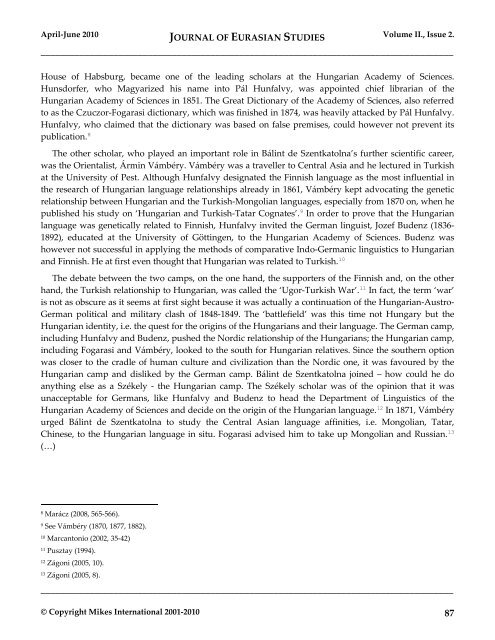
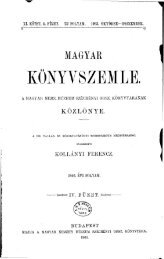
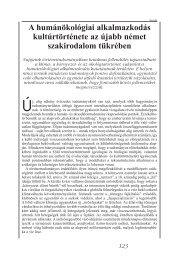
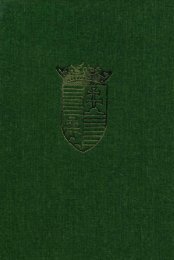
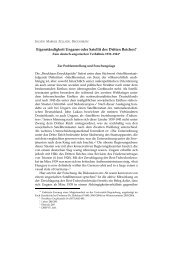
![Letöltés egy fájlban [36.8 MB - PDF] - EPA](https://img.yumpu.com/23369116/1/172x260/letoltes-egy-fajlban-368-mb-pdf-epa.jpg?quality=85)
